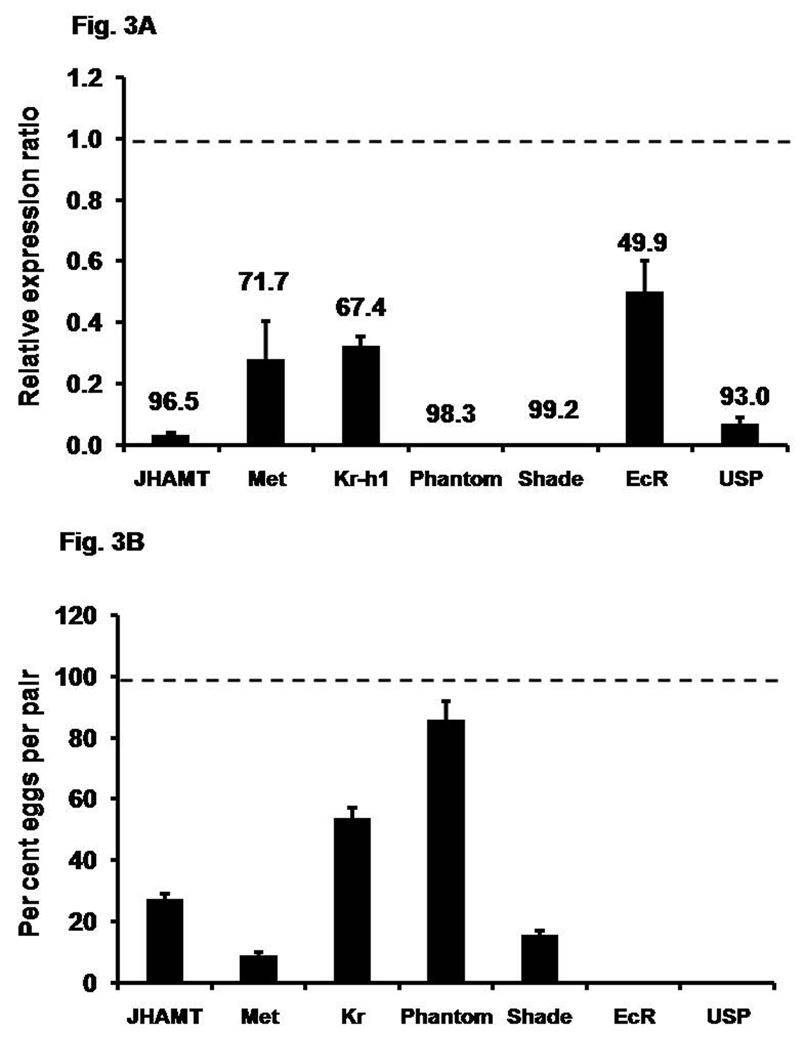Fig. 3.
Fig. 3A. Knock-down efficiency of gene expression after injection of dsRNA. dsRNA for genes coding for proteins involved in JH biosynthesis or action (JHAMT, Met, Kr-h1), 20E biosynthesis and action (Phantom, Shade, EcR, USP) and malE (control) were injected into two-day-old female pupae or day 0 PAE adults (within 24 h of emergence). On day 4 PAE, RNA was extracted and the relative expression in comparison to ribosomal protein (rp49) was determined by qRT-PCR. The expression levels of these respective genes in the control insects were set to 1, the relative expression levels were determined with respect to control, and the numbers above each bar show the percent knock-down efficiency. Mean ± S.E. of three independent replicates are shown.
Fig. 3B. Effect of knock-down in the expression of genes involved in JH biosynthesis and action (JHAMT, Met , Kr-h1) and 20E biosynthesis and action (Phantom, Shade, EcR, USP) on the number of eggs produced by RNAi females mated with uninjected virgin males. dsRNAs of the above genes were injected as described in the Materials and Methods section. On the 4th day after adult eclosion, the RNAi females were mated with the virgin males on a single pair basis. The average numbers of eggs from each pair were shown. The egg produced by female beetles injected with malE dsRNA served as a control and set as 100 percent. The percent eggs produced with respect to control was determined for each treatment. Mean ± S.E. of three independent replicates with 10 pairs in each replicate are shown.

